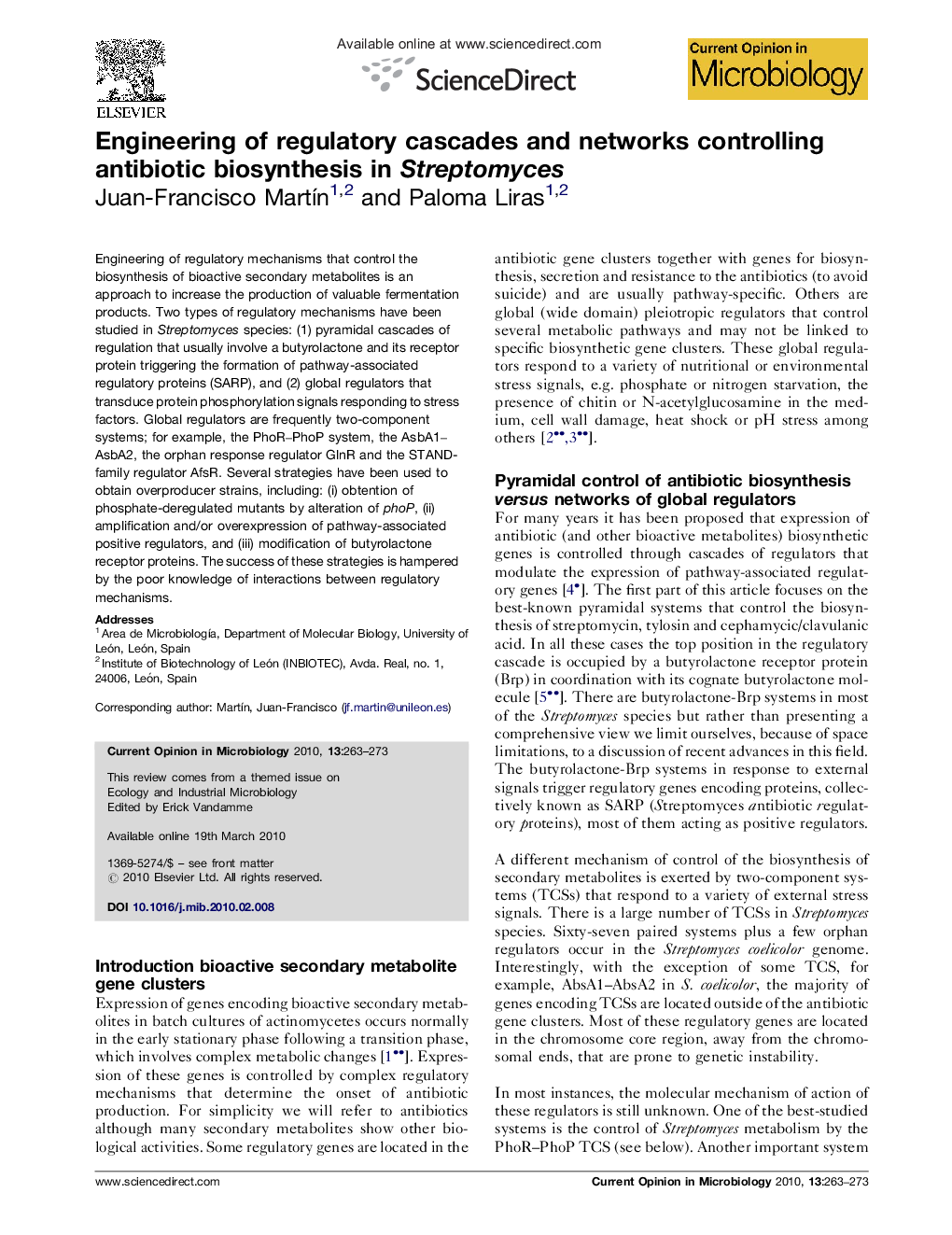| Article ID | Journal | Published Year | Pages | File Type |
|---|---|---|---|---|
| 3399161 | Current Opinion in Microbiology | 2010 | 11 Pages |
Engineering of regulatory mechanisms that control the biosynthesis of bioactive secondary metabolites is an approach to increase the production of valuable fermentation products. Two types of regulatory mechanisms have been studied in Streptomyces species: (1) pyramidal cascades of regulation that usually involve a butyrolactone and its receptor protein triggering the formation of pathway-associated regulatory proteins (SARP), and (2) global regulators that transduce protein phosphorylation signals responding to stress factors. Global regulators are frequently two-component systems; for example, the PhoR–PhoP system, the AsbA1–AsbA2, the orphan response regulator GlnR and the STAND-family regulator AfsR. Several strategies have been used to obtain overproducer strains, including: (i) obtention of phosphate-deregulated mutants by alteration of phoP, (ii) amplification and/or overexpression of pathway-associated positive regulators, and (iii) modification of butyrolactone receptor proteins. The success of these strategies is hampered by the poor knowledge of interactions between regulatory mechanisms.
